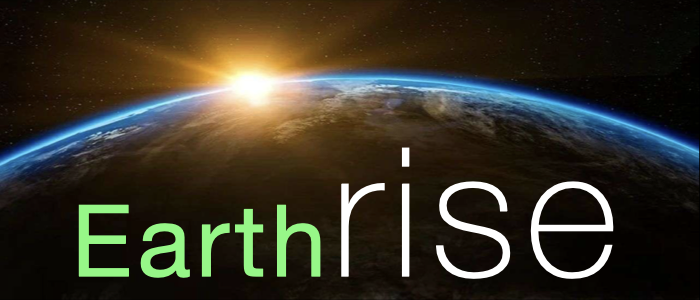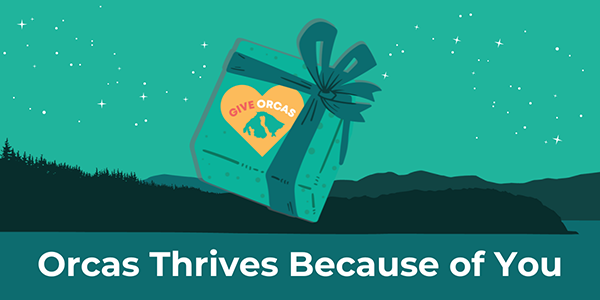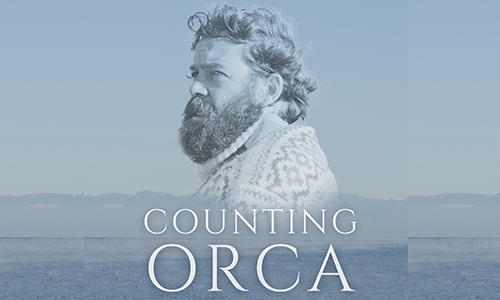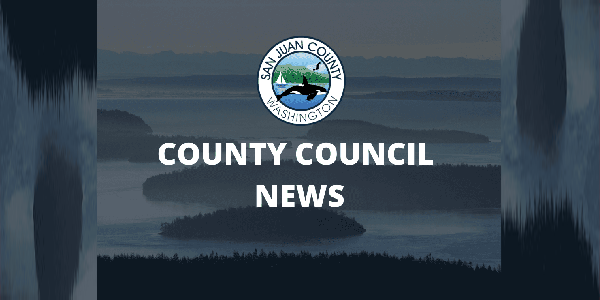||| EARTHRISE BY JAY KIMBALL |||
Some years ago, I struggled with mild depression, fueled by delayed grief over the loss of my sister to breast cancer at the too-young age of 43. With the invaluable empathetic encouragement of my wife, I found a wonderful therapist who, over several months, guided me through a gentle, introspective process from The Grief Recovery Handbook. It worked well. And then, something unexpected happened.
On an impossibly still spring morning, I slipped a kayak off White Beach into the peaceful waters of the Salish Sea and started to paddle out toward Twin Rocks, where a languorous rookery of seals beckoned.
As I paddled, I could feel the lightest shadow of grief and, without trepidation, recognized it as love. Comforted by the smooth passage of the kayak over the calm surface, and the sound of riffling water on the hull, my gaze followed the paddle blade down as it sliced into the flow of the infinite black sea.
And in that moment, time slowed… and slowed more. As the paddle blade eased back out of the water in slo-mo, a drop of moisture formed and fell from the edge. It fell and fell and fell. It fell some more, and time came to a standstill just as the drop rejoined the sea. The space around me expanded to encompass all things. And in that perfect pranic moment, an unfathomable embrace of deep Nature cradled me. And she whispered: “Welcome home…”
Earthrise: A Climate Action Journal
This climate action journal offers information and actions we can take together, locally and globally, as we care for this precious Earth.
“The best way to heal a living system, is to connect it with more parts of itself.” ~ Margaret Wheatley
If you like what you read here, pass it forward to a few friends and ask them to do the same. Like a pebble tossed in a pond, the rings emanate outward, reflecting and growing exponentially. “Going exponential” is what it will take to reverse the climate extremes that are accelerating around us.
Thank you…
+ Get an alert when there’s a new Earthrise post: Notify Me!
+ Previous Earthrise posts:
• First Light • Robert Dash – photographer, educator, environmentalist • Extreme Rain • A Poem for the Snow Leopard •
• How the Chinese spy balloon can inspire climate action • Tidal energy in the Salish Sea •
• The biggest source of county greenhouse gas pollution • The future of clean transportation in island communities •
Notes
When we are present to Earth’s beauty, and in the midst of deep nature, it renews and heals us. That gift of healing fortifies us for climate actions aimed at restoring the health of the natural world. One way we can recharge our spirits is through a daily or weekly stroll through nature. A kind of walking meditation, with our senses wide open to the sights and sounds of nature. As spring unfolds, I have been particularly taken with visiting each tree in the yard and looking deeply at the buds as they form and unfurl. Here’s a story about the practice of “forest bathing.” And one more – a compendium of studies on forest bathing.
Yesterday, the U.S. Surgeon General, Dr. Vivek Murthy, declared a new public health epidemic in America – loneliness. Getting out in nature and reaching out to a friend for a walk may help. Here’s the story.
**If you are reading theOrcasonian for free, thank your fellow islanders. If you would like to support theOrcasonian CLICK HERE to set your modestly-priced, voluntary subscription. Otherwise, no worries; we’re happy to share with you.**









So perfect, Jay….thanks for sharing this transformative experience. In his book “What we think about when we try not to think about global warming,” psychologist Per Stoknes tells us that the most effective way to get people energized about the climate emergency is to help them to feel the “Great Grief” for Mother Earth. It’s the same primal connection you describe.
Thank-you, Jay.
Your words move me deeply on many levels:
Loss of loved ones, loss of a balanced relationship with our Earth -our only home.
I am soothed by working to restore a tiny part of our Earth to something closer to what the First Peoples actively fostered. The ways that they worked with the lands and waters show that they discovered -well before modern scientists- that disturbance in moderation results in the greatest diversity of species. In her wonderful book, Gathering Moss, Robin Wall Kimmerer describes her work on mosses and the work of Robert Paine studying the rocky intertidal communities of the Washington coastline. Each concluded that moderate disturbance of the environment, by people or through natural forces, is beneficial for sustaining biodiversity.
Multiply insightful, Jay. Thank you.
Yi-Fu Tuan, a Chinese (now American geographer) published his book “Topophilia” in 1974. His preface is instinctively instructive:
“In 1952. a few friends and I, all Chinese graduate students at the University of California-Berkeley and all novices at camping, arrived at the Death Valley National Monument at about three in the morning, exhausted by the long drive and exhausted by an unsuccessful attempt to set up tent in the dark, buffeted by strong wind. In the end, we slept out in the open in our sleeping bags. When I woke up, the sun had risen high enough to throw its rays on a range of mountains across the valley and presented me with a scene totally alien to my experience up to that time, of such unearthly beauty that I felt transported to a superior realm and yet, paradoxically, also at home, as though I had returned after a long absence.”
Welcome home, Jay.
Oh, Jay. Thank you. That brought me to tears. So beautiful. We are so blessed to have you as a good friend and neighbor.
And now I’m anxious to get our kayaks out. I know that peaceful feeling well. ❤️
Nature asks so little of us in order to reveal her splendors … simply, a quiet and attentive mind will do.